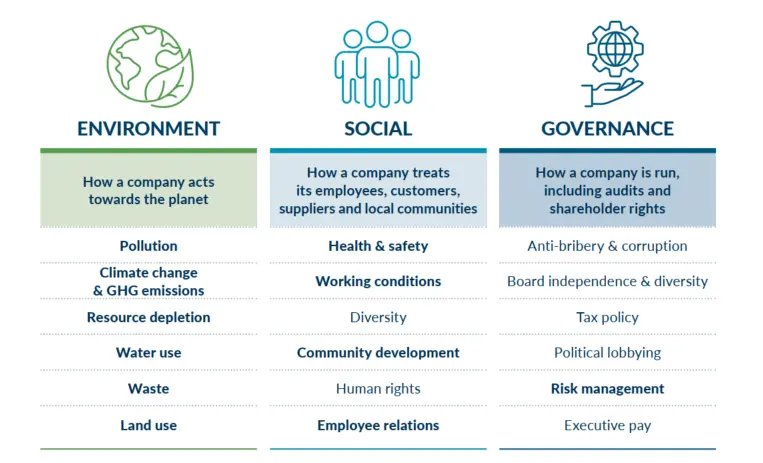Webinar Recap: Operationalizing ESG for Sustainability Success
As the world moves towards a more sustainable and socially-conscious society, businesses are under pressure to keep up—and utilities are no different. Pursuing Environmental, Social, and Governance (ESG) initiatives adds complexity to investment planning and decision making by introducing additional criteria to be considered. Organizations must strike a balance between meeting existing business commitments and goals, while also delivering on increasingly important ESG-driven outcomes. Copperleaf® is turning this challenge into an opportunity.
In a recent webinar hosted by Zpryme, Marc Campbell, Manager of Sustainability Policy and Programs at Salt River Project (SRP), and Boudewijn Neijens, CMO of Copperleaf, discussed the rising importance of ESG, and the need to assess the value of potential projects from a variety of different angles. The panelists explained how Copperleaf helps clients like SRP expand their business cases to include ESG and sustainability measures, embed sustainability in decision-making across the organization, and demonstrate the highest-value plan to stakeholders with confidence.
Expand Business Cases to Include ESG Measures
While the importance of ESG is increasing, there is still no official definition of what falls under each of the three pillars. As Marc explained: “the discipline of sustainability hasn’t settled on a universal definition, and that can make it more challenging to firmly establish a deep corporate understanding—because of the appearance of building a foundation on sand.”
Copperleaf has compressed the various definitions with input from ESG experts to create the following overview. Elements highlighted in bold can be directly impacted by good asset investment planning and management processes.

As Boudewijn explains in the following video clip, a project’s value can be measured by summing up its contribution to one or more of the criteria highlighted in the diagram above. ESG criteria can be incorporated into an existing value framework or can be the trigger to build a value framework for the first time. This ensures all relevant ESG criteria are accounted for, form part of business cases, and are valued appropriately.
Copperleaf helps organizations expand their assessment of project value, by quantifying ESG and financial measures on a common economic scale. When “value” is expressed in common economic terms, different departments can align on the cost-benefit of their proposed projects, and everyone can understand the rationale of each decision. This drives consensus and links day-to-day decisions with business strategy, creating a culture of transparency, accountability, and trust.
Embed ESG and Sustainability Goals in your Organization ‘s DNA
Once ESG and sustainability objectives have been defined, the next step is to make them a part of your corporate fabric. This can force you to think outside of your comfort zone, and can also trigger innovative thinking. To foster this innovation, these goals need to be embraced by your organization as part of its strategic objectives.
Sustainability has to be embedded into your organization and the only way to truly do that is by operationalizing sustainability goals…This sends a message from the top that sustainability is an important part of corporate strategy and other groups need to think about that, as a matter of doing business every day.
Marc Campbell
Manager of Sustainability Policy and Programs
SRP
As Marc explains in the following video clip, SRP’s senior leaders are designated as “goal owners” and work with their teams to develop “pathways” to achieving the organization’s strategic objectives. The result is a top-down, bottom-up approach that incorporates sustainability goals collaboratively. This drives rational discussions around the best plan for the business rather than attempting to prioritize in individual silos.
Demonstrate the Highest-value Plan to Stakeholders With Confidence
Looking at sustainability from an operational point of view, the challenge is that you cannot manage what you cannot measure. Objectives need to have metrics established so that teams know what they are aiming for. While this may seem daunting, it provides an opportunity for organizations to adopt more rigorous, defensible decision-making processes—and operationalize plans that drive ESG and financial goals.
SRP is leveraging the Copperleaf Value Framework to enable value-based decision making across the business. It allows all potential projects to be compared in a consistent, quantitative way, including all of the various options considered for each potential project idea. Powerful optimization capabilities make it easy to build a realistic plan that delivers on strategic objectives and can be executed with available resources. Decision makers can also run multiple what-if scenarios to understand the trade-offs of different investment strategies, agree on a recommended plan, and adapt quickly to shifting priorities.
The result? You can demonstrate to stakeholders the highest-value plan that considers all options and targets, with confidence.
To learn more about how SRP and other Copperleaf clients are leveraging Copperleaf’s Decision Analytics Solutions to demonstrate progress toward their ESG and sustainability goals, watch the webinar here.

